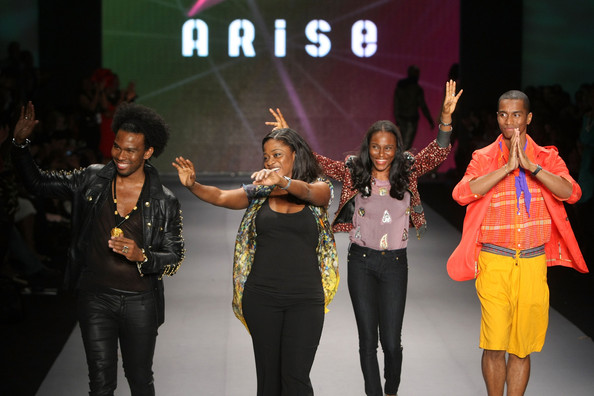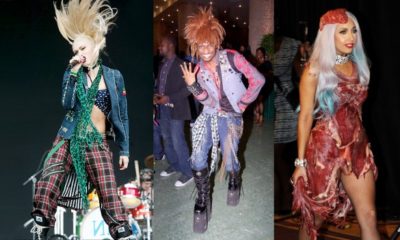News
Understanding The Fashion Industry- Where does Nigeria Stand?
There are certain structures and sectors that make-up a fashion industry, and there are designers other than those involved in high fashion that cater to consumers. The fashion industry is divided into the creative and the sales function, that is, design and production on one side and sales and distribution on the other. In Nigeria the creative part is present but there are not enough platforms for the sales functions. As an emerging industry, Nigeria’s fashion industry should be a determining factor in our economy and for this to happen we need to clearly understand how it can work.
The structure of the fashion industry is centered around the designers, as there will be no fashion industry without them. Everything else like models, modelling agencies, tailors, fashion photographers, fashion schools, , fashion retailers, fashion magazines are built around them.Fashion designers however make different categories of clothes, there are mainly three categories but it can be broken down into more parts, but the three main ones are Haute Couture, Prêt a Porter (ready- to -wear) and High Street fashion.
Haute Couture is a term loosely used today, you can be walking on the street and see a store selling shoes and bags and it’s called Steven’s Couture. Haute Couture consists of custom-made clothes made from very expensive fabrics. It takes days to make one fabric and there is only one of it ever made for a particular person. Aristocrats and celebrities usually patronize Haute Couture and their price ranges from 25,000 dollars to millions of dollars. Haute Couture is also referred to as high fashion and they are definitely not everyday clothes unless you are a French Queen. In France Haute Couture is a protected term and can only be used by a handful designers so I’m sure you wont see Oga Chinedu’s house of Couture as you drive by. Some Couture houses are Giorgio Armani Prive’, Christian Dior, Alexander McQueen, Givenchcy, Christian Lacroix, emmanuel Ungaro and in Nigeria we have Deola Sagoe.
Prêt a Porter also known as ready- to- wear are clothes, shoes and accessories that are not custom made. They are made by the designers to cater to every size and body-type. They aren’t mass-produced but you find at least 5 to 20 of the same outfit. Most Couture designers also produce ready- to- wear because it is more profitable; the clothes are then featured on the runway during fashion week. Ready- to -wear clothes are more versatile than Couture, and also not as pricey. Ready -to -wear fashion designers are Calvin Klein, Azzaro, Carolina Herrera, Celine, Chloe, and in Nigeria we have Jewel by Lisa and a host of others, as most designers tend to focus on offering ready-to-wear pieces.
The High Street refers to the clothes that are mass-produced; they are usually made from lower quality fabrics and are very affordable. A lot of the designs are usually inspired by the Prêt a Porter collections showcased at Fashion Week and sometimes there are collaborations with designers, like the recent one with H&M and Lanvin. They are usually trendy and have suddenly being popularized by the media via blogs and TV. This style of fashion is responsible for the popularity of certain trends like jeggings and this season’s colour-block trend. Most high street fashion pieces are made in third world countries, hence the mass production and affordability . Labels that are popular for high street fashion are H&M, Zara, Primark, Forever 21, New Look and Gap. This sector is yet to develop in the Nigerian Fashion Industry.
Another creative part of the industry are the fashion institutes such as fashion schools and tailoring outlets. This is where the fashion designers or potential ones enhance their design abilities and learn how to properly make a mark in the fashion industry. They also learn how to sew and work with models and other people in the creative world. Fashion designers aren’t the only ones that attend fashion schools; anyone with the intent of working in the fashion industry can attend. Fashion school grooms you for careers in fashion. Careers like wardrobe and fashion stylists and make-up artists. These are very important to fashion designers because they are the ones that make the designer’s vision become reality. Some of the fashion schools include Fashion Art and Creative Academy (House of Henri) in Nigeria, Istituto di Moda Burgo in Italy, Parsons the New School for design in New York amongst many others.
Designers need a muse to represent their brand. They also need spokes people and faces that will help advertise their brand. And that is why the fashion industry won’t be complete without modeling agencies and models. Models are usually used for catalogues, runways, magazines, billboards and TV to advertise the designer’s creation. Modeling agencies are the ones responsible for scouting for models and we even have shows such as American Next Top Model that scout for models also. For a model to succeed, she is usually represented by a top modeling agency like FM model agency, Elite model management, Ford and in Nigeria Beth Modelling Agency. Some of these agencies have produced top models for decades, Naomi Campbell, Tyra banks, Gisele Bundchen, Iman, and Oluchi.
Another aspect of the fashion industry is the media which consists of the fashion magazines, fashion bloggers, fashion journalists, fashion TV Stations, fashion books and the advertising agencies. They fill the gap between the fashion industry and the rest of the world. These are the people that translate and promote fashion. It is their responsibility to keep us updated on trends, upcoming designers, prices and give fashion advice. They give information about everything going on in fashion including sales and distribution. The most popular fashion magazines are Vogue, Elle, and in Nigeria we have Complete Fashion, and upcoming ones like WOW Magazine and Mania.
Another sector of the industry is sales and distribution and this is is where retail outlets come in. Most designers usually have stores all over to sell their pieces and there are retail stores that are dedicated to some particular designers and their works, while others just stock different designers. These stores make it easy for consumers to have access to the designer’s work and also contribute to the economy by hiring people and paying taxes. In Nigeria you have Temple Muse and Leila Fowler who stock pieces by Nigerian designers.
Currently in Nigeria, there exists a lot of untapped territory, we are yet to see proudly Nigerian High Street stores, and while some designers may be heading towards this direction, there is a need for the industry to create platforms in which they can survive and be profitable. However, there is the link that exists between the fashion industry and the larger economic environment. The fashion industries which we use as a benchmark, have certain structures in place, which we are yet to have. For one, stable electricity may forge the establishment of the High Street and mass-production. However, it is important to know where we are heading, which is to be regarded as one of the top fashion industries globally. This can be achieved if the government recognizes the potential in the fashion industry to accumulate large amounts of revenue. There is the need to implement certain systems to ensure it reaches its full potential by creating avenues for entrepreneurial activities within the different sectors.
Sources:
Elle Magazine, May 11 N0.309
Wikiinvest.com
Photo credit: zimbio
___________________________________________________________________________________________
Twitter: @ReineMichi
Blog: http://uberchicmichi.blogspot.com

























